Barleria greenii
Barleria greenii M.Balkwill & K.Balkwill
Family: Acanthaceae
Common names: wild bush petunia, Green's barleria
Introduction
Barleria greenii is a striking and highly habitat-specific shrub, known for its large pink to white flowers that bloom in summer and release their sweet fragrance at night. Endemic to a small area between Weenen and Estcourt in northern KwaZulu-Natal, this critically endangered species is under serious threat from illegal settlements and land-use changes, placing its few remaining wild populations at great risk.
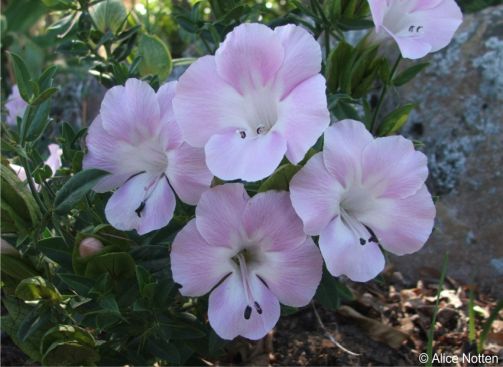
Description
Description
Barleria greenii is a fast-growing, woody shrub that lives for many years. It usually stays green throughout the year (evergreen), unless affected by fire or extreme cold. It is well adapted to harsh conditions and grows quickly, making it a resilient garden plant if given the right conditions. In the wild, it can grow up to 1.8 m tall if undisturbed, but in areas where it is regularly burned or cut back, it tends to remain shorter and bushier, at around 0.8 m high and 1.2 m wide. The plant forms a rounded or dome-like shape, with dense, upright branches that give it a neat appearance. The main stems are thick and woody at the base, with older branches covered in pale grey-brown bark that can feel slightly rough or cracked. Towards the top, the stems are thinner, green, and covered in fine white hairs that give them a soft, fuzzy texture. Leaves grow in opposite pairs along the stems. They are narrow and oval-shaped, about 25 to 35 mm long and 8 to 14 mm wide, with a tough, leathery feel. A unique feature of the plant is the small, sharp, backward-curving hook at the tip of each leaf. The upper side of the leaf is dark green and slightly glossy, while the underside is paler and more yellowish green. The edges of the leaves often curl slightly under, especially at the base, and the surface becomes rougher as the leaves dry out.
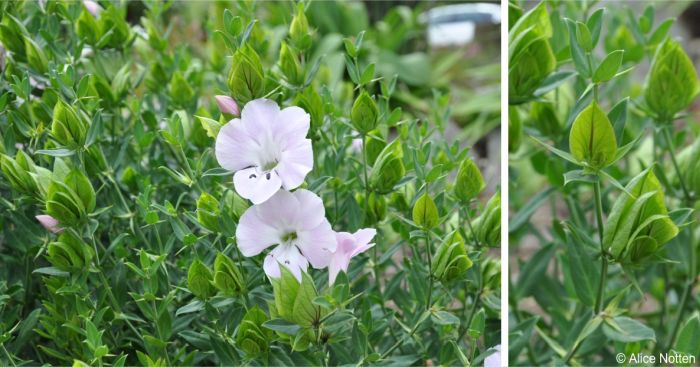
The flowers appear in small groups (clusters) where the leaves meet the stem, usually from mid- to late summer. They are large and showy, about 45 mm long, and shaped like long, narrow trumpets that flare open into five uneven lobes (petal-like parts). The colour varies from nearly white with soft pink markings to deep pink or magenta. During the day, the flowers do not have a scent, but at night, they release a strong, sweet fragrance that attracts moths, especially hawk moths, which are likely its main pollinators. Carpenter bees are also frequent visitors during the day, drawn by the plant’s abundant nectar. Each flower is accompanied by two sharp, spine-like bracts which remain on the plant even after the flower drops off. These give the plant a thorny appearance, especially after flowering. After flowering, the plant produces small, oval seed capsules about 20 mm long. These start green and turn black as they mature. When dry, the capsules burst open suddenly and forcefully, flinging the seeds away from the parent plant; a method known as explosive seed dispersal. Each capsule contains up to four flat, round seeds that are dark grey or black and covered in tiny hairs. These hairs become sticky when wet, helping the seeds anchor themselves to the soil when it rains, which improves their chances of germination.
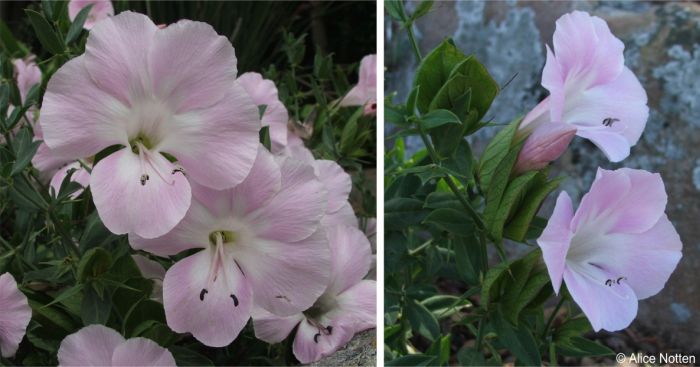
Conservation Status
Status
Barleria greenii is assessed as Criticially Endangered (CR) according to the Red List of South African Plants and faces a very high risk of extinction in the wild in the near future. It is a rare species, with a very limited range and is found in just a few locations in a highly specific habitat, and its habitat is severely threatened. The plant is impacted by illegal settlements and land claims, especially within the Weenen Nature Reserve, where the removal of fences has allowed settlements to establish, increasing grazing pressure from livestock. This is expected to worsen as communal land management typically leads to more frequent fires and heavier grazing, both of which threaten its survival. Although the plant resprouts after fire, frequent burning prevents seedlings from growing, while low seed production and high seed predation further limit regeneration. Increased grazing could also cause soil erosion in its habitat.
Distribution and habitat
Distribution description
This spectacular shrub is a narrow endemic, naturally occurring in a small area between Weenen and Estcourt in KwaZulu-Natal. It is typically found in open, rocky areas on moderately sloping, north-facing aspects, mostly between 1 200 and 1 260 m above sea level, in heavy, dense black clay soil among scattered doleritic rocks. The species is most abundant in moist sites, such as along drainage lines, streams, or boggy areas. Although locally common within its limited range, Barleria greenii is considered rare due to its highly restricted distribution and specific habitat requirements. It grows at the transition zone between grassland and valley bushveld, often occurring along the edges of seasonal or perennial watercourses. Most plants grow in full sun, nestled among rocks. In contrast, individuals growing in shaded areas such as beneath trees tend to be less robust and display broader leaves.
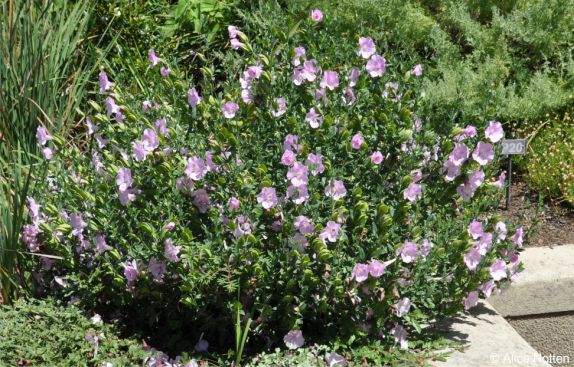
Derivation of name and historical aspects
History
The genus name Barleria is the Latinized form of the name Jacques Barelier (1606–1673), a French Dominican monk and botanist known for his work on medicinal and ornamental plants. The genus was formally described in 1753 by Carl Linnaeus, who named it after Barelier to honour his contributions to botany. This species is named in honour of Dave Green, a farmer and amateur botanist from the Estcourt district in the KwaZulu-Natal Midlands. He first discovered the species in 1984 on the farm Van der Merwe’s Kraal. At that time, Barleria greenii was only known from this single site. In 1988, two additional populations were located, and during further fieldwork in January 1990, three more populations were discovered in adjacent areas, confirming the species’ very limited but locally common distribution. The species was named and described by Mandy-Jane and Kevin Balkwill in 1990.
Barleria greenii belongs to the family Acanthaceae, a large and diverse plant family consisting of approximately 191 genera and around 4 900 species worldwide. Members of this family are known for their striking flowers and specialized seed dispersal mechanisms, including explosive capsules. In southern Africa, members of Acanthaceae are typically found in dry or seasonally dry environments, although some species also thrive in moist, forested habitats. The genus Barleria comprises about 250–300 species and is widespread throughout the tropical and subtropical regions of Africa, Asia, and the Americas. Approximately 60 species occur naturally in southern Africa. Species in this genus are usually herbs or shrubs, often spiny, and are ecologically significant for their role in pollinator support and their adaptation to a variety of environments.
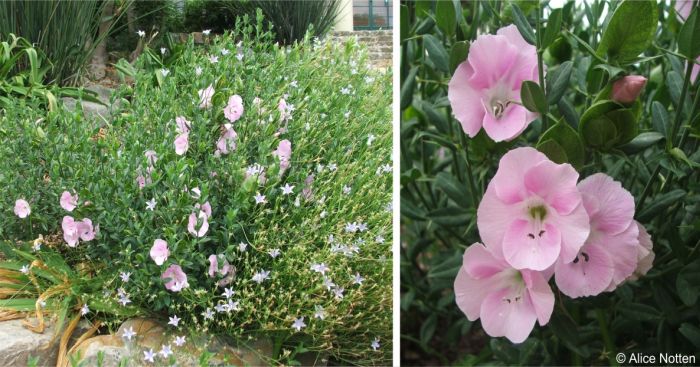
Ecology
Ecology
Barleria greenii is night-scented and pollinated by moths. It produces copious amounts of nectar that attracts carpenter bees. Seed pods explode when ripe, and seeds are expelled by ballistic dispersal over relatively short distances from the parent plant. This results in dense but localized populations.
In its natural habitat the plants must contend with grass fires, which older plants survive and send out new growth afterwards (resprouters). Plants that are burned frequently are well-branched and rarely up to 1 m tall, whereas those that are burned less frequently are robust woody and reach almost 2 m in height. Seedlings and young plants do not survive the fire.
Uses
Use
There are no documented traditional medicinal or cultural uses specific to Barleria greenii, likely due to its rarity and limited natural range in KwaZulu-Natal. However, other species in the Barleria genus are used in traditional medicine across Africa and Asia for treating wounds, coughs, fevers, and inflammation, so it is possible that B. greenii may have similar potential.
In horticulture, Barleria greenii is valued for its striking, trumpet-shaped pink flowers, neat growth form, and drought tolerance. It makes an attractive garden shrub for sunny rockeries or water-wise gardens. The plant is especially appealing to gardeners who are interested in indigenous or pollinator-friendly plants, as it attracts moths and bees. Although not widely sold in nurseries, it is sometimes available through specialist indigenous plant growers in South Africa. Because of its narrow distribution and conservation concern, wild populations should not be harvested. Instead, cultivation from nursery-grown stock is encouraged to protect the species. With proper care, B. greenii can be grown successfully in gardens where it provides seasonal colour and attracts night-time pollinators. Its ability to recover from fire and harsh conditions also makes it suitable for ecological restoration or conservation landscaping in appropriate areas.
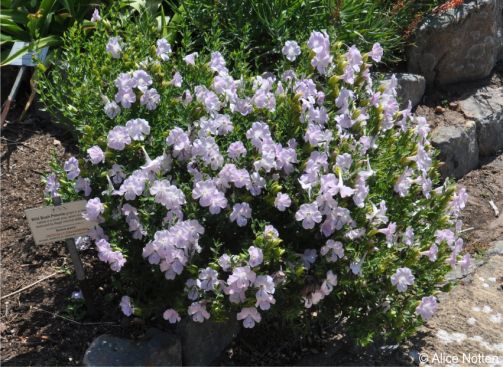
Growing Barleria greenii
Grow
Barleria greenii is a fast-growing, attractive shrub that can be successfully propagated by seed and cuttings. It grows best in well-drained soil, in full sun to partial shade, and warm, humid conditions, making it ideal for gardens in subtropical and tropical regions. To grow this species from seed, harvest ripe seed capsules before they burst open, as the plant disperses its seeds explosively. Allow the seeds to dry in a cool, dry place. Sow them in early spring or summer in a mix of two parts quality soil, one part compost, and one-part coarse river sand. Press the seeds lightly into the surface of the soil without covering them. Place the tray in light shade (around 40%) and keep the soil moist using a fine mist spray. Maintain temperatures between 20–25°C. Germination usually occurs within 7 to 28 days. When the seedlings reach a height of about 150–200 mm, they can be transplanted into their permanent positions in the garden.
Cuttings are another effective method of propagation. Take 10–12 cm long softwood or semi-hardwood cuttings in summer. Remove the lower leaves and dip the cut end in rooting hormone. Plant the cuttings in clean river sand or a sandy loam mix in a free-draining pot or tray. Keep them in a warm, humid environment with bright, indirect light, ideally between 20–25°C. Roots typically form within 4 to 6 weeks. Once rooted, transplant them into pots with compost-rich soil and harden them off before planting them outdoors.
Barleria greenii thrives in full sun but can tolerate light or dappled shade, especially in very hot areas. Plants grown in deep shade tend to be weak and flowers less. It grows well in loamy, sandy, or clay soils, provided they are well-drained. The ideal soil pH is slightly acidic to neutral. Avoid waterlogged conditions, as they can lead to root rot. Adding compost to the soil helps improve its fertility and structure. During hot and dry periods, water the plant twice a week to keep the soil evenly moist. In cooler seasons, watering can be reduced, but the soil should never be allowed to dry out completely. A balanced fertilizer containing equal parts nitrogen, phosphorus, and potassium can be applied every three months during the growing season. Organic compost can also be used, but avoid overfeeding, particularly with high-nitrogen fertilizers. Applying a thick layer of mulch around the base of the plant helps retain soil moisture, regulates temperature, and suppresses weeds. In summer, mulch keeps the roots cool, and in winter, it helps to insulate them. This shrub grows quickly and can reach 1 to 2 m in height. If not pruned, it may become woody and lose its shape. Prune back by up to two-thirds in late winter or early spring to encourage bushier growth and more flowers.
Barleria greenii is ideal for garden beds, borders, rockeries, and along pathways. It looks best when planted in groups of three to five, allowing space for each plant to spread naturally. It also performs well in large containers placed in sunny courtyards. It pairs beautifully with other drought-tolerant and sun-loving species such as Helichrysum petiolare (for silver foliage), Bulbine frutescens (as a succulent groundcover), Leonotis leonurus (for bold colour contrast), and Crassula ovata (for leaf texture). These companions not only share similar soil and light preferences but also contribute to a vibrant, low-maintenance, and pollinator-friendly garden.
Barleria greenii is largely pest-free, making it a low-maintenance option for gardeners. However, young seedlings may be susceptible to damping off in overly wet conditions. To prevent this, ensure good air circulation, avoid overwatering, and use general fungicide if necessary.
References
- Amoo, S.O., Finnie, J.F. & Van Staden, J. 2008. In vitro pharmacological evaluation of three Barleria species. Journal of Ethnopharmacology 121(2):274-277. https://www.sciencedirect.com/science/article/pii/S0378874108006235
- Balkwill, M-J., Balkwill, K. & Vincent, P.L.D. 1990. Systematic studies in the Acanthaceae: a new species of Barleria from Natal. South African Journal of Botany 56(5):571–576.
- Pooley, E. 1998. A field guide to wild flowers Kwazulu-Natal and the eastern region. Natal Flora Publications Trust, Durban.
- Scott-Shaw, C.R., Johnson, I.M., Styles, D., Makholela, T. & von Staden, L. 2007. Barleria greenii M.Balkwill & K.Balkwill. National Assessment: Red List of South African Plants. https://redlist.sanbi.org/species.php?species=3909-26.
Credits
Lungisani Zondi and Sihle Mvunyiswa
KwaZulu-Natal Botanical Garden
September 2025
Acknowledgements: images by Alice Notten
Plant Attributes:
Plant Type: Shrub
SA Distribution: KwaZulu-Natal
Soil type: Sandy, Clay, Loam
Flowering season: Late Summer
PH: Acid, Neutral
Flower colour: White, Pink
Aspect: Full Sun, Morning Sun (Semi Shade), Afternoon Sun (Semi Shade)
Gardening skill: Easy
Special Features:
Horticultural zones
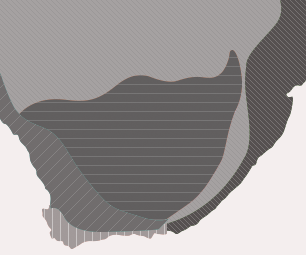










Rate this article
Article well written and informative
Rate this plant
Is this an interesting plant?
Login to add your Comment
Back to topNot registered yet? Click here to register.